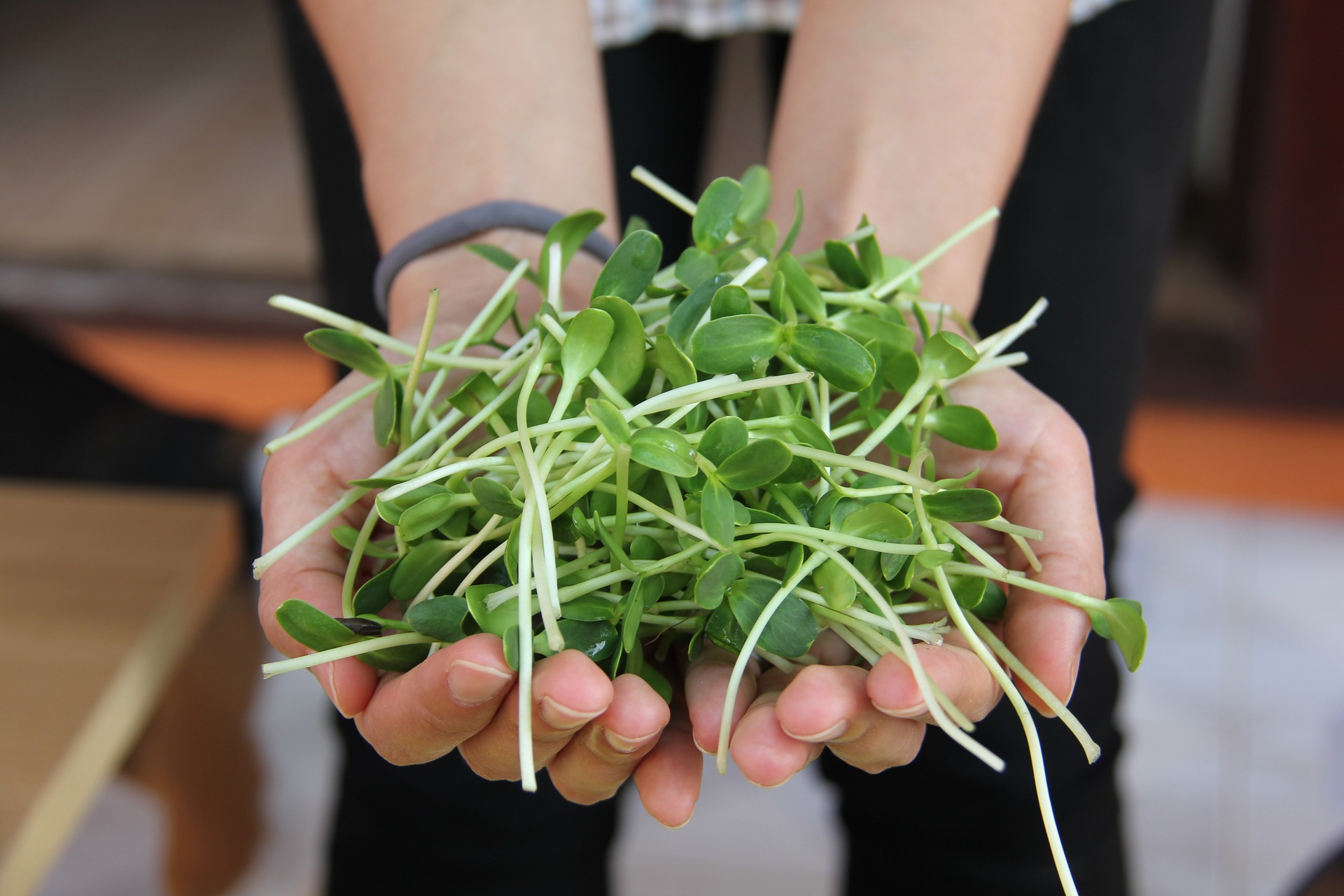
Sprouts
Ongoing harvest
In Prairie winter households, local, fresh produce can be in short supply. This doesn’t have to be the reality. Local greenhouses continue to expand their growing season and the supply of fresh produce increases each year. Sprouts are grown in water, not soil. With a few seeds and some water, fresh, nutrient-rich sprouts can be grown in your own kitchen,
Sprouts are tiny growing plants, germinated from seeds. Sprouts are nutritious, easily digestible, and an excellent source of antioxidants. A few seeds recommended for sprouting include alfalfa, red clover, sunflower, almond, broccoli, buckwheat, chickpea, lentil, mung bean, mustard, radish, sesame, soybean
Sprouting seeds is easy. Only a few supplies are needed: a small amount of good quality seeds, a large glass or clear plastic jar with a wide opening (such as a
The first step in the sprouting process is soaking the seeds. Place seeds in the bottom of the jar. Cover the seeds with clean, potable water at room temperature. Soak smaller seeds like broccoli or radish for six hours and larger seeds like beans or peas for twelve hours. After this soaking or swelling stage, pour out water through the mesh and rinse seeds with fresh water.
After soaking, draining and rinsing seeds, place the jar in a dark place at room temperature. Wait for the seeds to germinate: this can take anywhere from one to twelve days, depending on the seed. While waiting for seeds to germinate, the seeds should be rinsed at least twice daily (morning and evening) and preferably three times/day. Always use clean water near room temperature for rinsing. Once seeds begin to produce leaves, place the container in a bright spot to allow green chlorophyll in the leaves to develop. Never place any sprouting seeds in direct sun. Sprouts are ready to eat as soon as leaves or roots are visible.
Sprouts that lose their hulls, i.e. sunflowers, need to be cleaned in a different manner than seeds without hulls. Once the sunflowers have sprouted, place them in a sink or a big bowl filled with water. Gently separate the hulls from the sprouts using your fingers. The hulls will rise or sink in the water and must be manually removed from the sprouts.
Sprouts can be stored in the fridge for up to two weeks. Keep the sprouts in a sealed container and rinse with cool water every two days. One of the main concerns with sprouting seeds is contamination of the sprouts with
Mumm’s Sprouting Seeds – located in Parkside, Saskatchewan
Sprout Master – Elmvale, Ontario
Eatmore Sprouts – Courtenay, BC
For more detailed information about sprouting seeds, check out the book “The Wonders of Sprouting” by Lucie Desjarlais: available from your
Happy Sprouting!

